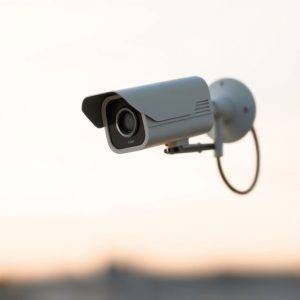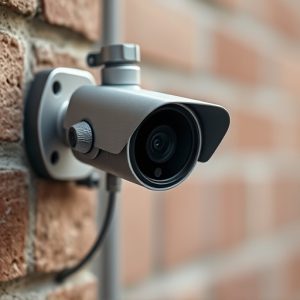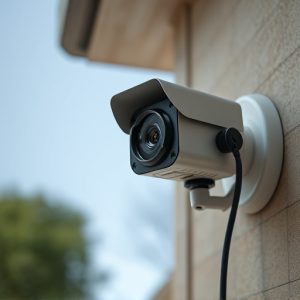Hidden Camera Systems with Audio: Uncovering their Functionality and Implications for Privacy
Hidden camera technology has made significant strides, now incorporating high-definition video and c…….
Hidden camera technology has made significant strides, now incorporating high-definition video and crystal-clear audio recording capabilities. These sophisticated devices are incredibly small yet powerful, seamlessly blending into everyday environments and offering unparalleled surveillance with dual-recording functionality. They can be hidden in innocuous objects like clocks or books, making them undetectable to intruders or subjects under observation. The integration of advanced microphones ensures that both visual and auditory data are captured effectively, providing comprehensive monitoring that's essential for home security, covert investigations, and ensuring privacy during surveillance. These hidden camera systems with audio have become indispensable tools in various sectors, including law enforcement, corporate security, academic research, healthcare, and personal safety, due to their unobtrusive nature and high-quality recording capabilities. However, it's crucial to navigate the complex legal landscape governing their use, as laws differ significantly by jurisdiction, with key considerations like consent and privacy rights taking center stage in both the U.S. and Europe under regulations like the Federal Wiretap Act and GDPR. The advancements in this technology prompt a continuous dialogue on ethics and privacy, emphasizing the need for legal frameworks and ethical standards that protect individual rights while leveraging these devices for positive applications in surveillance and security.
In an era where privacy is paramount, the advent of spy cameras with audio has significantly altered the surveillance landscape. These sophisticated devices blend seamlessly into environments, capturing both visual and auditory information with unprecedented clarity. This article delves into the covert world of hidden camera systems with audio recording capabilities, exploring their technical nuances, diverse applications, and the complex legal frameworks governing their use. We will also cast a critical eye towards the future, examining advancements in this technology and the ethical quandaries they pose to our concept of privacy. Join us as we unravel the intricate tapestry of hidden camera technology with audio—a silent sentinel in an increasingly interconnected world.
Unveiling the Stealthy World of Hidden Camera Systems with Audio Recording Capabilities
Hidden camera systems with audio recording capabilities have become increasingly sophisticated, blending seamlessly into everyday environments. These discreet devices are engineered to capture high-quality video and crystal-clear audio, offering users a comprehensive surveillance solution. The integration of microphones within these miniature cameras ensures that any accompanying audio is as clear and intelligible as the visual footage, which is invaluable for a range of applications from home security to covert investigations. The advancement in technology has led to these systems being so small that they can be concealed within a variety of objects, from clocks and smoke detectors to books and toys. This stealthy design makes it exceedingly difficult for potential intruders or unwanted observers to detect their presence, thereby providing users with an unparalleled level of security and peace of mind. With the ability to monitor audio and visual environments simultaneously, these hidden camera systems with audio provide a powerful tool for those seeking to protect their personal spaces or conduct undercover operations without alerting subjects to their observation. Users can rest assured that they are capturing everything they need without drawing attention to their surveillance efforts.
The Technical Intricacies: How Hidden Cameras with Audio Differ from Traditional Surveillance Gear
Hidden cameras with audio capabilities represent a significant advancement in surveillance technology, offering a more comprehensive monitoring solution compared to traditional surveillance gear. These devices are meticulously designed to blend seamlessly into their environment, capturing both visual and auditory data without drawing attention. Unlike conventional CCTV cameras that primarily focus on video recording, hidden cameras with audio are equipped with microphones sensitive enough to pick up a wide range of sounds, from hushed whispers to loud conversations. This dual functionality enables users to gather richer context surrounding the visual information recorded, providing a more nuanced understanding of the events as they unfold.
Technically, these devices often incorporate miniaturized components, such as tiny micro-electromechanical systems (MEMS) microphones and compact digital signal processors (DSPs), to ensure high-quality audio recording without compromising the discreet nature of the camera. The integration of these components is crucial for maintaining the device’s small form factor while delivering clear and intelligible audio. Additionally, these hidden cameras with audio are frequently augmented with advanced features like motion detection, which can trigger both video and sound recording upon sensing activity within the vicinity. This selective activation not only conserves storage space but also enhances privacy by limiting data capture to when it is needed most.
Applications and Use Cases for Discreet Audio-Visual Monitoring Solutions
Hidden cameras with audio capabilities have become indispensable tools across a variety of sectors, offering discreet surveillance and recording capabilities that are both powerful and unobtrusive. In environments where maintaining privacy is paramount, these devices ensure that interactions are documented without alerting individuals being recorded. For instance, in the realm of law enforcement, hidden cameras with audio enable undercover operations to gather intelligence without compromising the agent’s cover. Additionally, in the corporate world, they provide a means to monitor sensitive areas such as R&D labs or executive offices, ensuring the protection of trade secrets and proprietary information.
Furthermore, these devices are invaluable in the field of behavioral science and psychology, where researchers study natural human interactions without the influence of an observer effect. In healthcare settings, they assist in monitoring patient care standards and can serve as a training tool to improve the quality of care by providing clear visual and audio evidence that can be reviewed post-interaction. Moreover, in the realm of personal security, hidden cameras with audio offer homeowners and renters the ability to keep an eye on their property from afar, deterring potential intruders and capturing evidence should an incident occur. The versatility of these devices makes them a critical component in any comprehensive surveillance strategy where discreet audio-visual monitoring is required.
Evaluating the Legal Implications of Using Hidden Camera Systems with Audio in Various Jurisdictions
When evaluating the legal implications of using hidden camera systems with audio in various jurisdictions, it is imperative to understand that privacy laws and regulations can significantly differ across regions. In the United States, for instance, the Federal Wiretap Act and state-specific laws govern the recording of conversations, often requiring one party’s consent to record if it involves electronic communication. However, in some states, all parties must consent to be recorded legally, which is a stricter requirement. The legality of hidden cameras with audio thus depends on the specific laws of the state where they are used.
In contrast, other countries have distinct legal frameworks. For example, the General Data Protection Regulation (GDPR) in the European Union imposes stringent rules on data protection and privacy, which include restrictions on recording individuals without their explicit consent. The use of hidden camera systems with audio is subject to these regulations, and violations can result in significant penalties. It is crucial for individuals to be aware of the nuances within each jurisdiction’s laws before deploying such surveillance equipment to avoid legal repercussions. Understanding the complexities of these laws is not only a matter of compliance but also of upholding ethical standards and respecting individual privacy rights.
The Future of Privacy: Advancements in Miniature Audio-Visual Recording Technology and Ethical Considerations
In recent years, advancements in miniature audio-visual recording technology have significantly impacted both the field of surveillance and the broader conversation around privacy. Hidden camera with audio devices have become increasingly sophisticated, capable of capturing high-quality footage and crystal-clear sound that can be reviewed or streamed remotely. These compact gadgets are now found in a myriad of everyday objects, from digital clocks to smoke detectors, raising the specter of unwanted observation in domains once considered private. As these technologies continue to shrink and improve, the potential for both security enhancement and privacy invasion grows, leading to ethical dilemmas that societies worldwide must navigate. The ability to record audio and video simultaneously means that interactions can be documented with unprecedented detail, which can be valuable for law enforcement and safety measures but also poses significant risks for individuals whose consent may not have been obtained. The future of privacy hinges on the balance between leveraging these technologies for beneficial purposes and safeguarding personal spaces from undue intrusion. It is imperative that legal frameworks and ethical guidelines evolve in tandem with technological advancements to protect individuals’ rights while fostering innovation that genuinely serves the public good.


